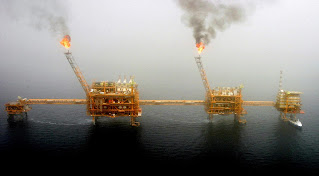As seen in the recent resurgence of polio in Syria, cholera
outbreaks in war areas in Yemen, and spread of Ebola in volatile eastern
Democratic Republic of Congo (DRC) regions. Indeed, in 108 refugee camps, 364
disease outbreaks occurred between 2009 and 2017. Fragility and dispute reverse
hard-earned development advances and stunt opportunities for girls, youth, and
the poorest. They undermine health services in the process, leaving communities
more vulnerable to disease outbreaks.
(The FCV). These countries are already seeing rising
incidents, and unprecedented steps are being taken by governments and
international partners to save lives and alleviate the worst socio-economic
impacts.
From DRC, Mali and Niger to Papua New Guinea, Haiti,
Afghanistan, Yemen and Gaza. Even more countries have requested assistance and
operations are being completed quickly with three key goals during this
unprecedented crisis: helping countries undertake emergency health operations
and improving economic resilience, protecting the poorest and most vulnerable
families, supporting business and saving jobs.
The UN COVID-19 Global Humanitarian Response Plan seeks to
combat the virus in the world's poorest nations, meeting the most vulnerable
people's humanitarian needs. Simultaneously, the UN COVID-19 Response and
Recovery Fund helps low- and middle-income countries to address the
virus-induced health and development crisis.
Moreover, — due to poor governance and state structures, unequal
access to services for disadvantaged communities and, too frequently,
neighborhood policy distrust. Such countries can also face compounding threats,
including shocks, forced displacement, and food insecurity.
It is critical that the immediate response of countries and
longer-term investments tackle these realities to avoid exacerbating existing
sources of fragility and, then, help create resilience to both this crisis and
potential shocks.
UN-World Bank Joint Report, Strategies for Peace: Inclusive
Solutions to Deter Violent Conflict, as well as the recent FCV Strategy for the
World Bank Community, include a collection of crucial concepts that can help
direct country-level response efforts in these demanding settings.
Conflict-sensitive questions. Countries affected by FCV, in
active conflict or war, all face distinct threats, and the new challenge
presented by the global pandemic will intersect with current disparities and
grievances and systemic ability gaps.
Pandemic, socio-economic effects, and response can all
intensify existing conflict risks. The root causes of conflict and fragility
and sources of resilience in each situation need to be clearly understood,
keeping in mind that supporting these populations and helping to create local
community resilience through women's groups and local social networks is
essential, as was done with the Refugee and Host Communities Support Project in
Niger.
There could also be tentative new opportunities for peace in
some areas, as has been seen in some countries in recent weeks since the UN
Secretary-General's call for global ceasefire.
Trust and inclusion counts. Obviously, public services
including health, social security and education are important in themselves,
but they are also the key ways citizens communicate directly with the state,
including local institutions. They are the primary medium for government faith
and trust.
Ensuring fair access to resources and preventing the
impression of exclusion by some communities help mitigate tensions that
threaten local and national authorities' legitimacy. Fair service delivery
decreases community competition and helps preserve public trust that is
essential to mobilizing collective efforts to combat the virus.
Topics of community engagement. Whether addressing the
immediate health threat or supporting and maintaining broken livelihoods,
governments need support so that they can engage publicly with broad sectors of
society — including youth, women, trade unions, the private sector, and
marginalized groups — in and beyond the emergency phase to help analyze,
design, implement, and monitor programs.
For example, during the recent Ebola outbreak in eastern
DRC, addressing grievances and building confidence by investing in employment
and social infrastructure through the Community Resilience Initiative was as
critical as health interventions. They also help promote support and awareness
of the concerted emergency measures required now, as well as the challenging
trade-offs required to handle the long-term socioeconomic effects.
Partnership problems. To both meet urgent health needs and
seek to improve governance and resolve the long-term effects of the crisis.
These collaborations are already at work: a $26.9 million World Bank grant
through IDA, its fund for the poorest countries, is being introduced with WHO
in Yemen to help reduce the spread and minimize risks associated with COVID-19.
Joint research and preparation by governments with UN, World
Bank, and other multilateral and bilateral partners – in ways that reduce the
risk of conflict, maintain stability, and protect health systems – would be
important. This will build on existing capacities and structures rather than
replacing them or set up parallel responses to the burden on affected
countries.
For FCV-impacted countries and citizens, COVID-19 recovery
involves economic development, as well as stronger institutions and social
stability that will help inoculate against the next crisis. We will now
collectively help countries to lay the groundwork to "develop
better."




Comments
Post a Comment